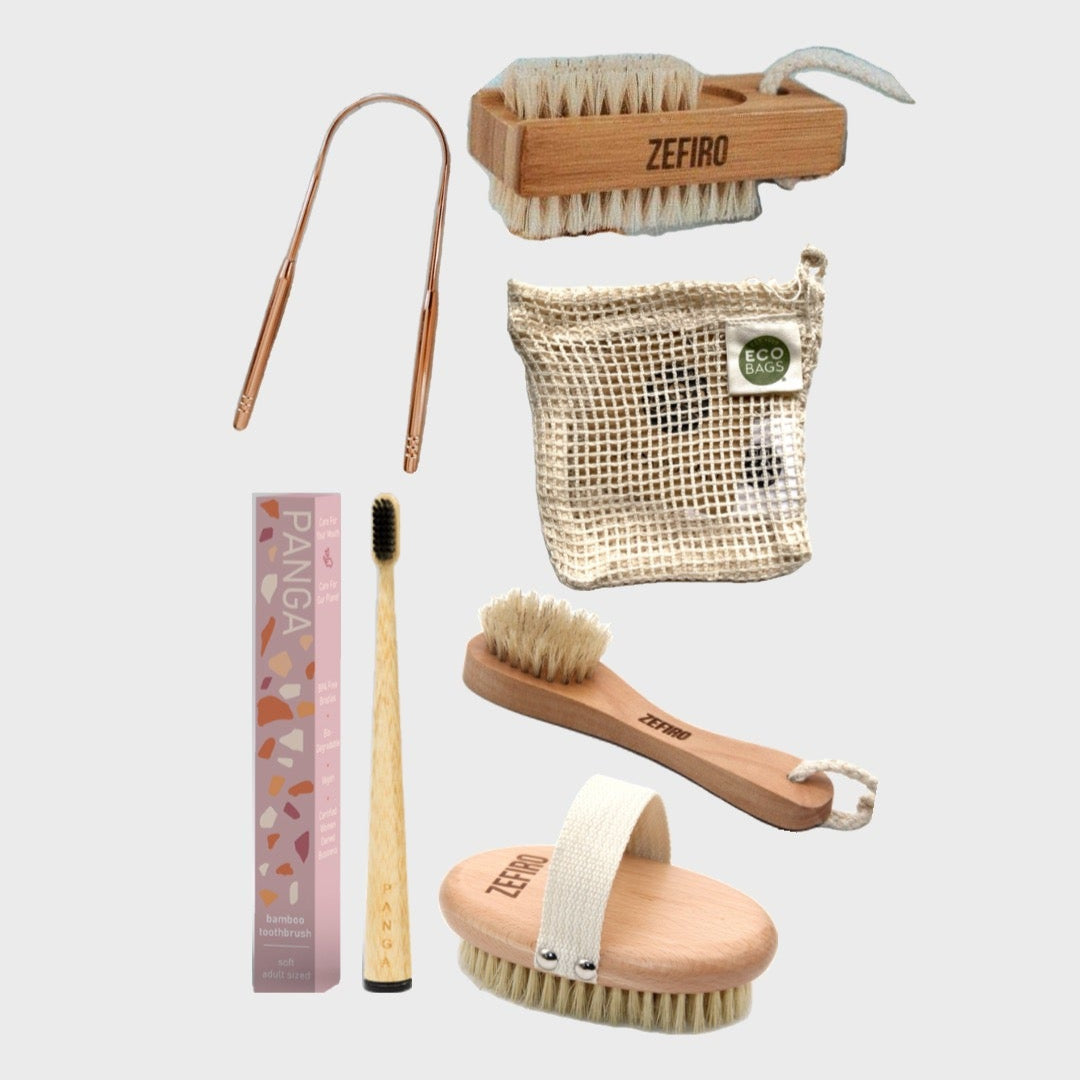Which type of candle is right for you?
Hey friends, it's Sean!
You know us; we love our candles, aroma sprays, and melts to keep our space smelling great. Not only at New Origin Shop but at home too!
Candles are our go-to. Sierra and I always have a candle burning or melting on a candle warmer. C'mon, what better way to add ambiance AND fragrance to any room? But we're willing to bet you love candles too. I bet you even know how to use a snuffer—you little candle enthusiast you. (And if you don't, we've got you covered)
But with so many different types of candles available, knowing which one to choose can be challenging. In this blog post, we will compare three popular types of sustainable candles: beeswax, soy wax, and coconut wax.
Sorry paraffin candles, you're just not eco-friendly enough for this list.

Beeswax Candles
Image Credit: Mo & Co Home
Beeswax candles are made from the wax that bees produce to build their honeycombs. Beeswax candles are often considered the most natural and eco-friendly option because they are made from a renewable resource and burn cleanly, having very little smoke or soot. Beeswax candles are also naturally fragrant, with a subtle honey-like scent.
Pros:
- Natural and eco-friendly
- Burn cleanly
- Long-lasting and more heat resistant than other wax types
- Naturally fragrant
Cons:
- Expensive compared to other types of candles
- Limited fragrance options
- It can be challenging to find in stores (*cough* unless you shop at New Origin Shop *cough*)
Average Burn Time:
1 oz. of beeswax candle wax can burn for approximately 4-6 hours.
Best Use Examples:
Beeswax candles are perfect as birthday candles because of their clean burn and heat resistance. They're great for dinner parties or any occasion where you want to create a warm, inviting atmosphere. They also make great gifts for people who appreciate natural, eco-friendly products.
Soy Wax Candles
Image Credit: P.F. Candle Co.
Soy wax candles are made from soybeans, making them a renewable and sustainable option. Soy wax candles are often scented with essential oils and come in a wide range of fragrances, making them popular among candle enthusiasts.
Pros:
- Renewable and sustainable
- Burns cleanly with little to no soot
- Has the widest range of fragrances
- Inexpensive compared to beeswax and coconut wax candles
Cons:
- It may contain additives that can affect the burn time
- It can be softer than other types of wax, making it prone to melting in hot weather
- It can have a weaker scent throw than coconut wax
Average Burn Time:
1 oz. of soy wax candle wax can burn for approximately 4-5 hours.
Best Use Examples:
Soy wax candles are great for everyday use in the home, especially in the living room or bedroom. They also make great gifts for people who love candles and want various fragrance options.
Coconut Wax Candles
Coconut wax candles are made from the oil of coconuts, making them a natural and renewable option. Coconut wax candles have a creamy white appearance and a slightly sweet, tropical scent.
Pros:
- Natural and renewable
- Burns cleanly with little to no soot
- Has a strong scent throw
- Has a longer burn time than soy wax candles
Cons:
- More expensive than soy wax candles
- Limited fragrance options
- It can be not easy to find in stores (*cough* We have options at New Origin Shop *cough*)
Average Burn Time:
1 oz. of coconut wax candle wax can burn for approximately 5-7 hours.
Best Use Examples:
Coconut wax candles are perfect for creating a relaxing spa-like atmosphere in any room. They also make great gifts for people who love relaxing, tropical scents.
Price and Environmental Impact
When considering which type of candle to purchase, it's important to consider the price and environmental impact. Beeswax candles are typically the most expensive, followed by coconut and soy wax. However, all three types of candles are made from renewable resources and are considered eco-friendly options.
Conclusion
Image Credit: Raspopova Marina via Unsplash
In conclusion, there are many factors to consider when choosing a candle, including fragrance, burn time, price, and handling warm weather. Each type of candle also has its own strengths and weaknesses.
Hopefully, we've given you a better idea of what to look for the next time you go candle shopping!
For more tips & recommendations, follow us at @neworiginshop
See you later,
Sean












Leave a comment